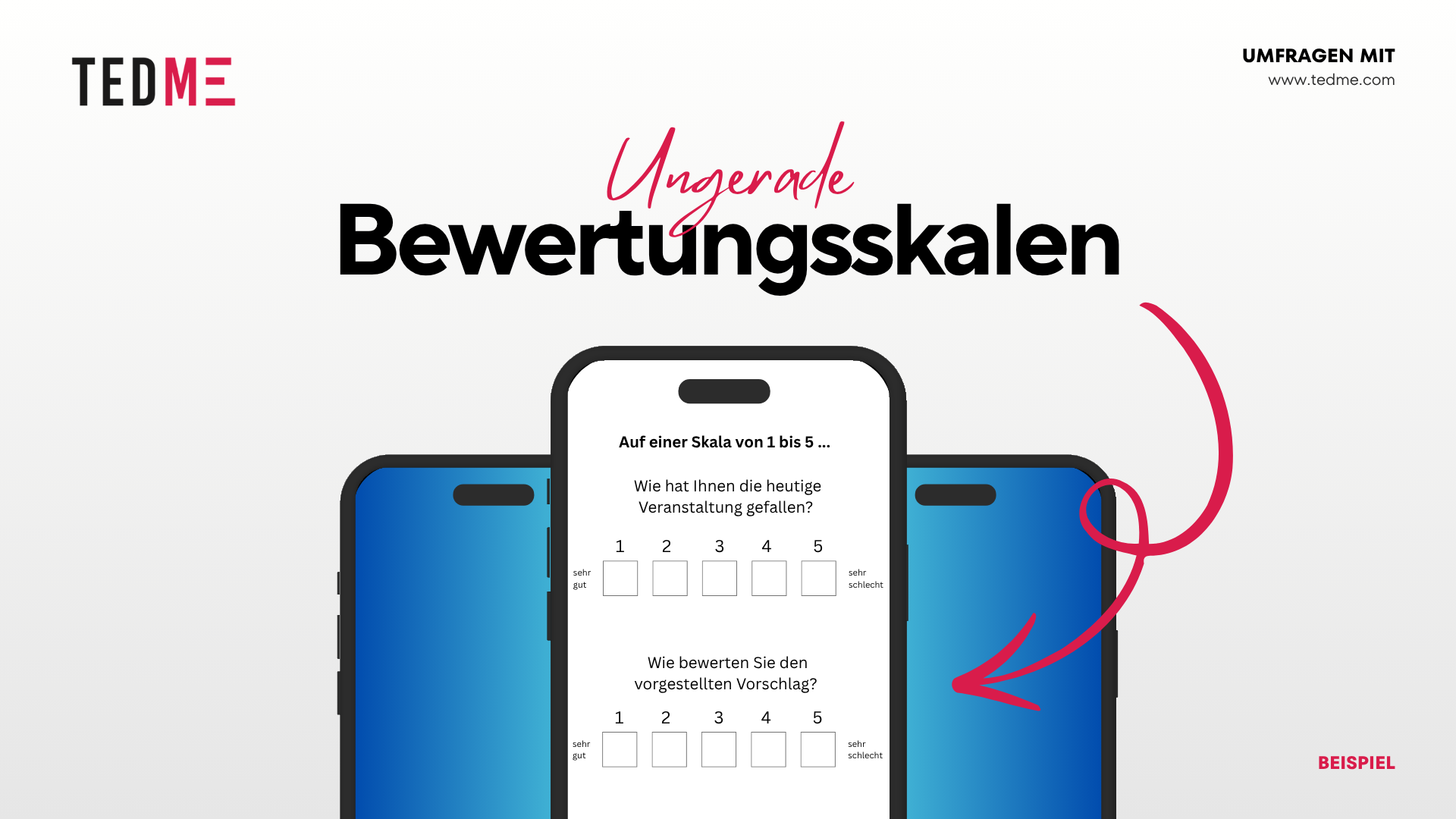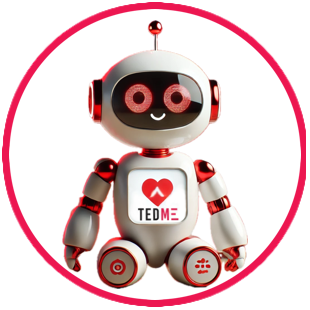In the world of surveys and polls, question types and response categories play a crucial role in the accuracy and interpretation of your survey results. As organisers of elections, online polls and committee resolutions and many other surveys, you face the challenge of choosing the right scales to collect accurate and meaningful data. This blog post will give you a detailed overview of the different response categories and their advantages and disadvantages. So that you know exactly when you should use what.
Numerical scales - are simple and easy to analyse
Numerical scales are a popular choice for surveys due to their simplicity and familiarity. A typical numeric scale ranges from 1 to 10, with participants choosing a number to express their opinion. These scales make statistical analyses easier for you, as the answers are directly available as numerical values and you do not need to do any prior coding. However, the answers are subjective and can produce different results depending on how they are interpreted.

Advantages:
- Simplicity and familiarity: Numerical scales are known in many cultures and are easy to understand.
- Objective data: Numerical scales provide objective data points that can be used directly for statistical analyses without prior conversion.
- Statistical analysis: Direct numerical values enable quick and easy statistical analyses.
Disadvantages:
- Subjectivity of interpretation: A number like "5" can be interpreted differently by different participants.
- Difficulty with extreme values: Participants may find it difficult to rate extremes such as "1" or "10" consistently.
Verbal scales - can be described precisely
Verbal scales use descriptions instead of numbers to capture participants' opinions. For example, such a scale ranges from "very unlikely" to "very likely" or from "very satisfied to very dissatisfied" or "strongly agree" and "strongly disagree". These scales offer you a more precise recording of opinions, as clear and descriptive categories are used that participants can better understand and interpret.
Advantages:
- Precise description: Each response level is clearly defined and helps participants to express their opinions more precisely.
- Emotional depth: Verbal scales can capture deeper emotional reactions of participants that may not be fully captured by simple numbers.
- Better comparability: The clear descriptions allow the participants to express their opinions precisely, which makes it easier to compare the answers.
- Flexibility in customisation: As the organiser, you can adapt the scales and their descriptions depending on the survey objective and target group.
Disadvantages:
- Language barriers: Participants with limited language skills may have difficulty understanding the descriptions correctly. While numbers are often understood more clearly.
- Limited number of categories: Compared to numerical scales, verbal scales can offer less flexibility, especially when capturing subtle nuances.

Emojis as a scale
The use of emojis as response options in scales is becoming increasingly popular, especially in online surveys and social media. Here are some considerations:
- Visual appeal: Emojis are visually appealing and can increase the attention of participants, especially younger generations.
- Cultural differences: Emojis can have different meanings in different cultural contexts, which limits their universal usability.
- Limited informative value: Emojis often offer less nuance and are less precise in capturing opinions compared to verbal scales.
- Technical restrictions: Not all survey platforms or participant devices may support the display of emojis uniformly, which could lead to inconsistencies in the responses.
- Statistical analysis: If you want to analyse the emojis statistically, you must first convert them into "calculable" sizes.
Overall, emojis offer a fun and intuitive way to express and capture opinions. However, choose and use them carefully to ensure that you can accurately capture and interpret the desired data.
Even though emojis at scale are growing in popularity, you should carefully consider their use depending on the target group and platform to ensure the accuracy and comparability of the data collected.

Even or odd scales?
When designing scales, you can choose between odd and even scales, with each variant having its advantages and disadvantages.
Odd scales
An odd Likert scale includes an odd number of response options, typically 5 or 7, so it includes a neutral middle option (e.g. "Neutral") that allows respondents not to express a strong opinion.
- Advantages of odd scales:
- Better orientation: The middle option makes it easier for your participants to take a neutral position if they do not have a strong opinion.
- Flexibility: You can record both positive and negative opinions without a neutral option distorting the answers.
- Better orientation: The middle option makes it easier for your participants to take a neutral position if they do not have a strong opinion.
- Disadvantages of odd scales:
- Neutral tendency: Participants may tend to choose the middle option. This can affect the validity of the data. In other words, you do not know clearly what the result will be for this question.
- Neutral tendency: Participants may tend to choose the middle option. This can affect the validity of the data. In other words, you do not know clearly what the result will be for this question.

Straight scales
An even scale has an even number of answer options, e.g. 4 or 6, which means that the neutral middle option is missing and each answer requires a decision in favour of or against the statement.
- Advantages of straight scales:
- Avoidance of neutrality bias: Your participants must take a clear position.
- Stronger polarity: The scale encourages a stronger polarity in the answers, which makes the data more meaningful for you.
- Avoidance of neutrality bias: Your participants must take a clear position.
- Disadvantages of straight scales:
- Missing option in case of uncertainty: Participants may be forced to express an opinion, even if they are unsure. This can lead to distorted results.
- Missing option in case of uncertainty: Participants may be forced to express an opinion, even if they are unsure. This can lead to distorted results.

Even or odd scales - when do you use what?
The decision between odd and even scales depends on the objectives of your survey:
- For detailed, differentiated opinions: An uneven scale offers more scope for differentiated assessments.
- For clear yes/no judgements: An even scale can be more useful for forcing clear decisions.
Conclusion
Whether verbal, numerical or emoji-based scales - they all have their advantages and disadvantages. If you are unsure which is best suited to your survey, feel free to ask us. We will be happy to advise you before your next project.



